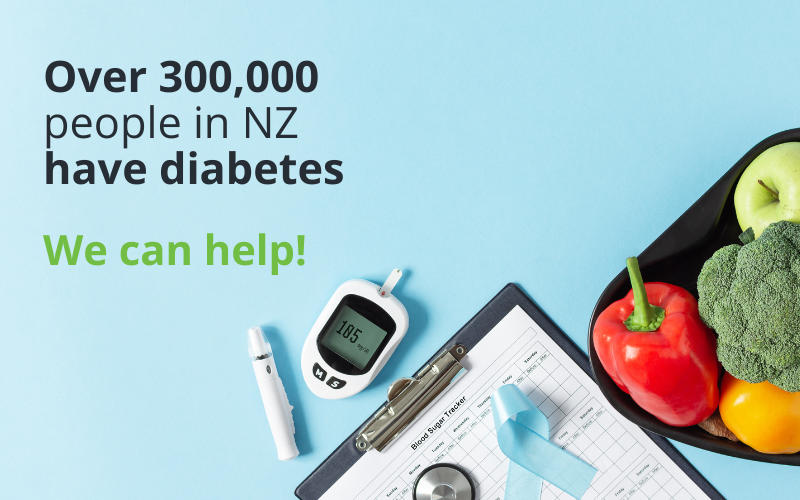Being told that you have high blood sugar can feel overwhelming, especially if you're not sure what it means for your health. Let’s break it down in a way that’s easier to understand.
High blood sugar occurs when there’s too much glucose (sugar) in your bloodstream. This can happen if your body doesn’t make enough of a hormone called insulin, or if the insulin it produces doesn’t work as well as it should. In some cases, your body might stop making insulin altogether. Over time, having high blood sugar can cause damage to important areas like your heart, blood vessels, eyes, kidneys, and nerves.
In New Zealand, it’s estimated that over 300,000 people have diabetes, especially Type 2 diabetes. Many people with high blood sugar don’t notice any symptoms at first. But some signs you might notice include feeling very thirsty, needing to urinate more often, feeling tired, losing weight without trying, or having blurry vision.
Pre-Diabetes
- What it is: Pre-diabetes is when your blood sugar is higher than it should be, but not high enough to be classified as Type 2 diabetes. It’s a sign that you’re at a higher risk of developing diabetes and heart-related problems in the future.
- How common is it? Pre-diabetes is quite common in New Zealand, especially in people over 45, those with a family history of diabetes, and in certain communities like Māori, Pacific Islanders, and South Asians.
- What can I do? The good news is that pre-diabetes can often be managed or even reversed with lifestyle changes. Eating a balanced diet, staying active, and maintaining a healthy weight can make a big difference. Keeping an eye on your blood sugar levels with regular check-ups is also helpful.
Type 2 Diabetes
- What it is: Type 2 diabetes happens when your body doesn’t respond properly to insulin or doesn’t produce enough, causing high blood sugar. This is the most common type of diabetes in New Zealand.
- How common is it? It’s a growing issue in New Zealand, particularly in Māori, Pacific Islanders, South Asians, and people with a family history of diabetes.
- What increases the risk? Factors like being overweight, not getting enough exercise, unhealthy eating habits, age, and genetics can all play a role.
- How is it treated? Treatment usually starts with lifestyle changes—eating healthier, exercising more—and might also include medication. In some cases, people with Type 2 diabetes may need insulin. Monitoring your blood sugar regularly is important to keep things under control.
Managing your blood sugar well, whether you have pre-diabetes or diabetes, is key to staying healthy and reducing the risk of complications. The earlier you take steps to manage it, the better your chances of living a healthy life with fewer issues down the road.
Get to know our Nutritionists and Dietitians - Amy Allport, Ellie Connor, Melissa Greacen, Julia Scott, Hannah Eriksen and Anna Williams, who would all love to help you.
If you would like individualised one-on-one advice to support you on your journey, you can make an appointment online, or reach out to our Clinic Manager, Hayley, to answer any questions you have and she can help to organise a booking for you.

AIA Vitality Members please book online here

All other clients please book online here


